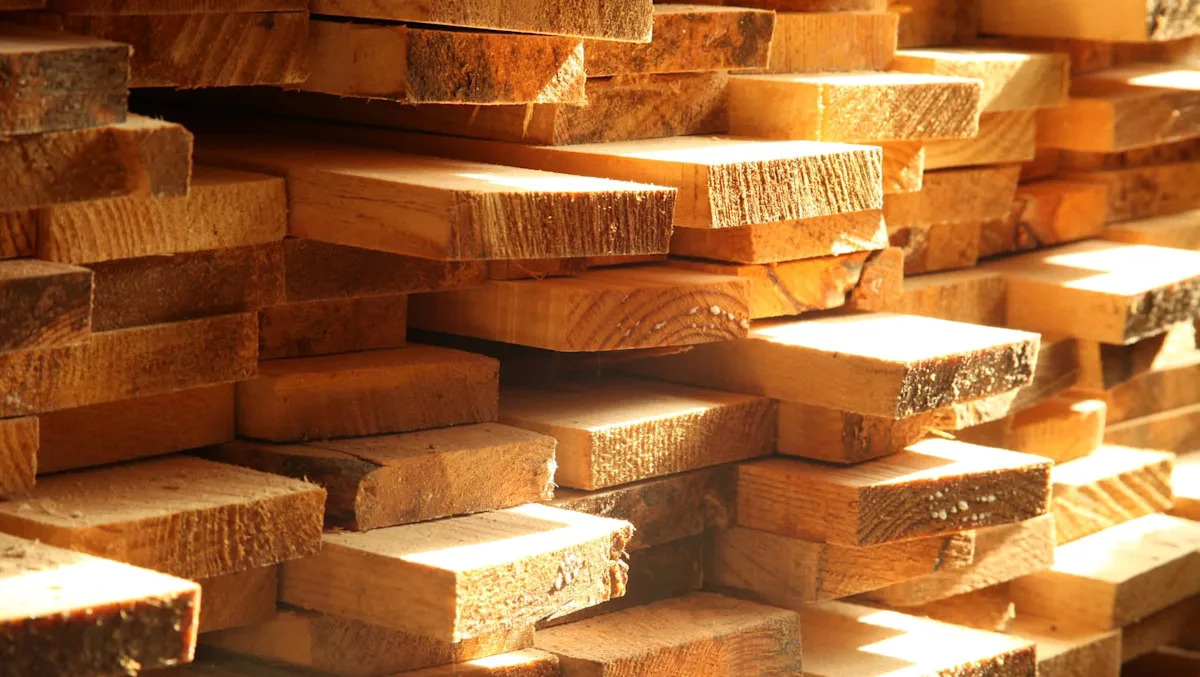
Researchers at Florida Atlantic University have discovered that they can make hardwood more durable by adding an iron compound to it, potentially changing the future of construction, as reported by Technology Networks.
Lignocellulose, a component of wood and other plants that forms its structure, can be chemically modified to produce energy or other chemical properties, driving scientists to test new materials to produce more sustainable and new types of wood. One of these studies came from the College of Engineering and Computer Science at Florida Atlantic University, in collaboration with the University of Miami and Oak Ridge National Laboratory.
In their tests, researchers wanted to find a mineral they could add to wood that would make it more durable without adding too much weight to the material, increasing costs, or decreasing sustainability. They introduced an iron compound, known as nanocrystalline iron oxyhydroxide, into red oak, a porous type of wood.
“Wood, like many natural materials, has a complex structure with different layers and features at varying scales,” study author and FAU assistant professor Vivian Merk said. “To truly understand how wood bears loads and eventually fails, it’s essential to examine it across these different levels. To test our hypothesis — that adding tiny mineral crystals to the cell walls would strengthen them — we employed several types of mechanical testing at both the nanoscale and the macroscopic scale.”
The research team used vibrations to test the material’s elasticity and stickiness. According to Technology Networks, they also used nanoidentification tests to evaluate the wood’s strength and properties under bending and other stress.
“By looking at wood at different levels — from the microscopic structures inside the cell walls all the way up to the full piece of wood — we were able to learn more about how to chemically improve natural materials for real-world use,” Merk said.
Their findings, published in ACS Publications, showed that the material can strengthen the wood with only a small fraction of weight added.
“This research marks a significant advancement in sustainable materials science and a meaningful stride toward eco-friendly construction and design,” said FAU dean of the College of Engineering and Computer Science Stella Batalama. “By reinforcing natural wood through environmentally conscious and cost-effective methods, our researchers are laying the groundwork for a new generation of bio-based materials that have the potential to replace traditional materials like steel and concrete in structural applications.”
Materials that are heavily used in new construction projects, such as concrete, have damaging effects on the environment. Creating cement uses up a lot of water and results in large amounts of harmful pollution.
Wood, on the other hand, “the most environmentally friendly raw material at our disposal,” is sustainable and renewable. We can continue to plant new trees that produce oxygen and remove carbon from the atmosphere.
Scientists are looking at ways to incorporate strengthened wood into new buildings to increase their sustainability. In Japan, a new high-rise made out of wood marks a transformation into urban infrastructure. Researchers are even testing out wood that is resistant to fire and water.
The studies from the FAU team could help take the next steps with strong wood to help create more sustainable buildings.
“The impact of this work reaches far beyond the field of engineering,” Batalama said. “It contributes to global efforts to reduce carbon emissions, cut down on waste, and embrace sustainable, nature-inspired solutions for everything from buildings to large-scale infrastructure.”
Join our free newsletter for weekly updates on the latest innovations improving our lives and shaping our future, and don’t miss this cool list of easy ways to help yourself while helping the planet.
Disclaimer: This news has been automatically collected from the source link above. Our website does not create, edit, or publish the content. All information, statements, and opinions expressed belong solely to the original publisher. We are not responsible or liable for the accuracy, reliability, or completeness of any news, nor for any statements, views, or claims made in the content. All rights remain with the respective source.
